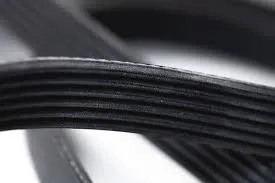- Arabic
- French
- Russian
- Spanish
- Portuguese
- Turkish
- Armenian
- English
- Albanian
- Amharic
- Azerbaijani
- Basque
- Belarusian
- Bengali
- Bosnian
- Bulgarian
- Catalan
- Cebuano
- Corsican
- Croatian
- Czech
- Danish
- Dutch
- Afrikaans
- Esperanto
- Estonian
- Finnish
- Frisian
- Galician
- Georgian
- German
- Greek
- Gujarati
- Haitian Creole
- hausa
- hawaiian
- Hebrew
- Hindi
- Miao
- Hungarian
- Icelandic
- igbo
- Indonesian
- irish
- Italian
- Japanese
- Javanese
- Kannada
- kazakh
- Khmer
- Rwandese
- Korean
- Kurdish
- Kyrgyz
- Lao
- Latin
- Latvian
- Lithuanian
- Luxembourgish
- Macedonian
- Malgashi
- Malay
- Malayalam
- Maltese
- Maori
- Marathi
- Mongolian
- Myanmar
- Nepali
- Norwegian
- Norwegian
- Occitan
- Pashto
- Persian
- Polish
- Punjabi
- Romanian
- Samoan
- Scottish Gaelic
- Serbian
- Sesotho
- Shona
- Sindhi
- Sinhala
- Slovak
- Slovenian
- Somali
- Sundanese
- Swahili
- Swedish
- Tagalog
- Tajik
- Tamil
- Tatar
- Telugu
- Thai
- Turkmen
- Ukrainian
- Urdu
- Uighur
- Uzbek
- Vietnamese
- Welsh
- Bantu
- Yiddish
- Yoruba
- Zulu
Jul . 27, 2024 00:06 Back to list
Understanding the Importance and Functionality of Rubber Timing Belts in Engine Performance
Understanding the Rubber Timing Belt A Vital Component for Your Engine
In the intricate world of automotive engineering, the rubber timing belt stands out as one of the most crucial components for ensuring optimal engine performance. This slender yet sturdy belt plays a pivotal role in synchronizing the movements of various engine parts, thereby ensuring that the engine operates efficiently and smoothly.
What is a Timing Belt?
A timing belt is a flexible rubber belt that connects the crankshaft to the camshaft in an internal combustion engine. Its primary purpose is to maintain the precise timing of the engine's valves and pistons. This synchrony is essential because it ensures that the engine’s intake and exhaust valves open and close at the correct times in relation to the position of the pistons, allowing for efficient combustion and power generation.
Construction and Material of Timing Belts
Typically made from reinforced rubber, timing belts often include high-tensile strength cords made of materials such as polyester or fiberglass, which provide strength and durability. The inner surface of the belt features specific teeth, which engage with gears on the crankshaft and camshaft. This design allows for the transfer of motion without slippage, maintaining accurate timing even under high-speed conditions.
Importance of Regular Maintenance
While timing belts are designed to last, they do not last indefinitely. Most manufacturers recommend replacement every 60,000 to 100,000 miles, depending on the vehicle and driving conditions. Failing to replace a worn or damaged belt can lead to serious engine problems, including the risk of engine misfire or, in severe cases, catastrophic engine failure. If the timing belt breaks while the engine is running, it can cause significant damage to other engine components, leading to costly repairs.
rubber timing belt

Signs of Timing Belt Issues
Due to the critical role of the timing belt, it is essential for vehicle owners to be aware of the signs of impending failure. Some indicators include
1. Unusual Noises A loud ticking noise from the engine could signal that the timing belt is worn or damaged. 2. Engine Misfiring If the engine stutters or misfires, it may be due to a slipping timing belt. 3. Oil Leaks An oil leak in the front of the engine might indicate that the timing belt cover is damaged. 4. Warning Lights A check engine light might illuminate on your dashboard, hinting at timing belt issues.
The Replacement Process
Replacing a timing belt is a complex task that should ideally be performed by a professional mechanic. The process usually involves
- Removing several components to access the timing belt. - Aligning the camshaft and crankshaft to ensure precise timing. - Replacing the old timing belt with a new one, along with related components such as tensioners and pulleys. - Reassembling everything and ensuring the engine runs smoothly.
Conclusion
The rubber timing belt is an essential yet often overlooked component of automotive engines. Its role in synchronizing engine timing underscores the need for regular maintenance and timely replacement. By staying informed about your vehicle’s timing belt and seeking professional help when necessary, you can ensure the longevity and reliability of your engine. Remember, taking proactive measures today can save you from costly repairs and unexpected breakdowns tomorrow.
-
Upgrade Power Steering Pump Belt for Smooth, Quiet Operation
NewsAug.27,2025
-
Precision Timing Belt & Chain: Engine Performance & Durability
NewsAug.26,2025
-
Precision Lathe Drive Belts: Durable & Reliable Performance
NewsAug.25,2025
-
84.5 Serpentine Belt: Durable & Precision Fit for Your Engine
NewsAug.24,2025
-
Premium Ribbed Drive Belts for Quiet Power Transmission
NewsAug.23,2025
-
High-Performance Vehicle Timing Belt for Engine Precision
NewsAug.22,2025

